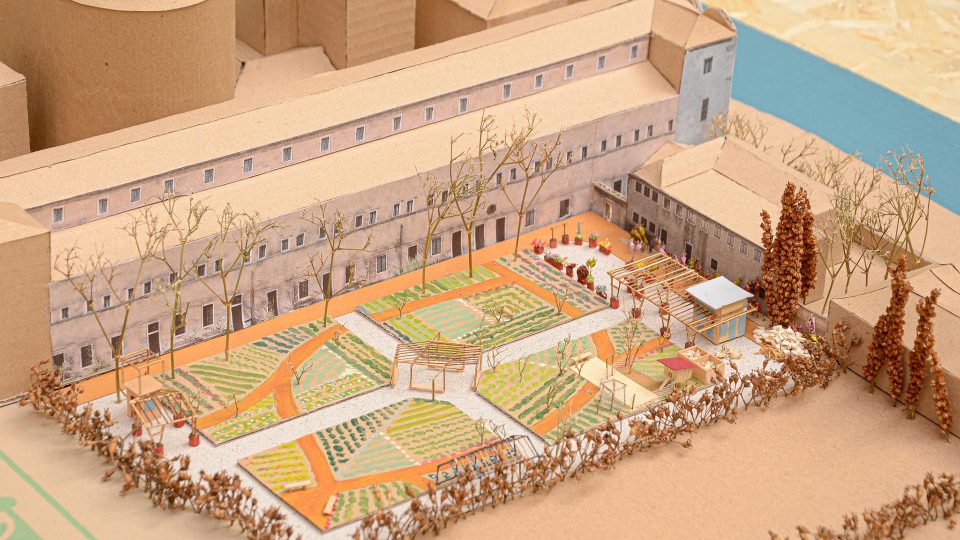
The Benedictine monastery in San Giorgio Island, lying in front of Piazza San Marco across a short stretch of water, is the stage of the Holy See’s Biennale participation. The protagonist of the exhibition is the intervention by Portuguese architect Álvaro Siza which accompanies visitors onto the garden, the place of contemplation. The orchard is a model of our relationship with God’s creation, a representation apparently frugal and modest, though in fact revealing an homage to Pope Francis’ encyclical Laudato si’, a source of inspiration for the project carried out in the abbey’s garden. This living, figural, outpouring architecture rep- resents a strong political and poetic message on what is, or what could be, the encounter among human beings.